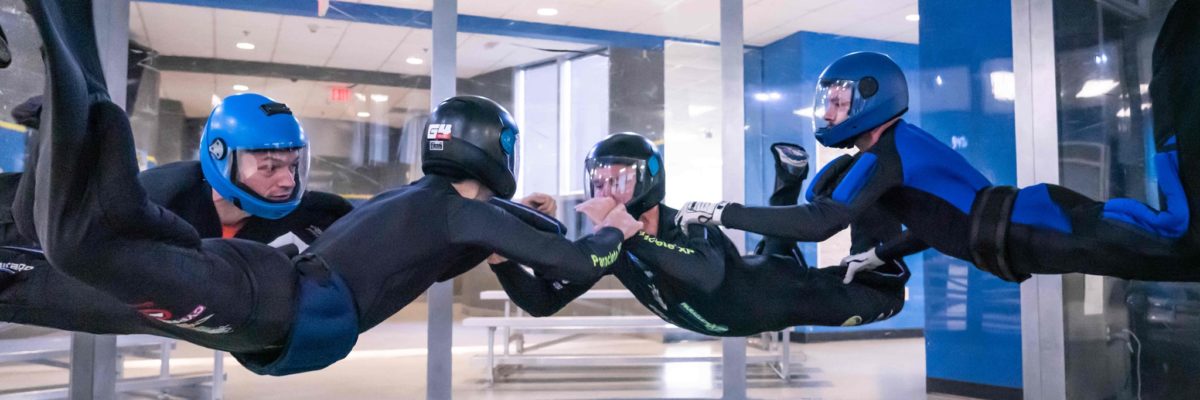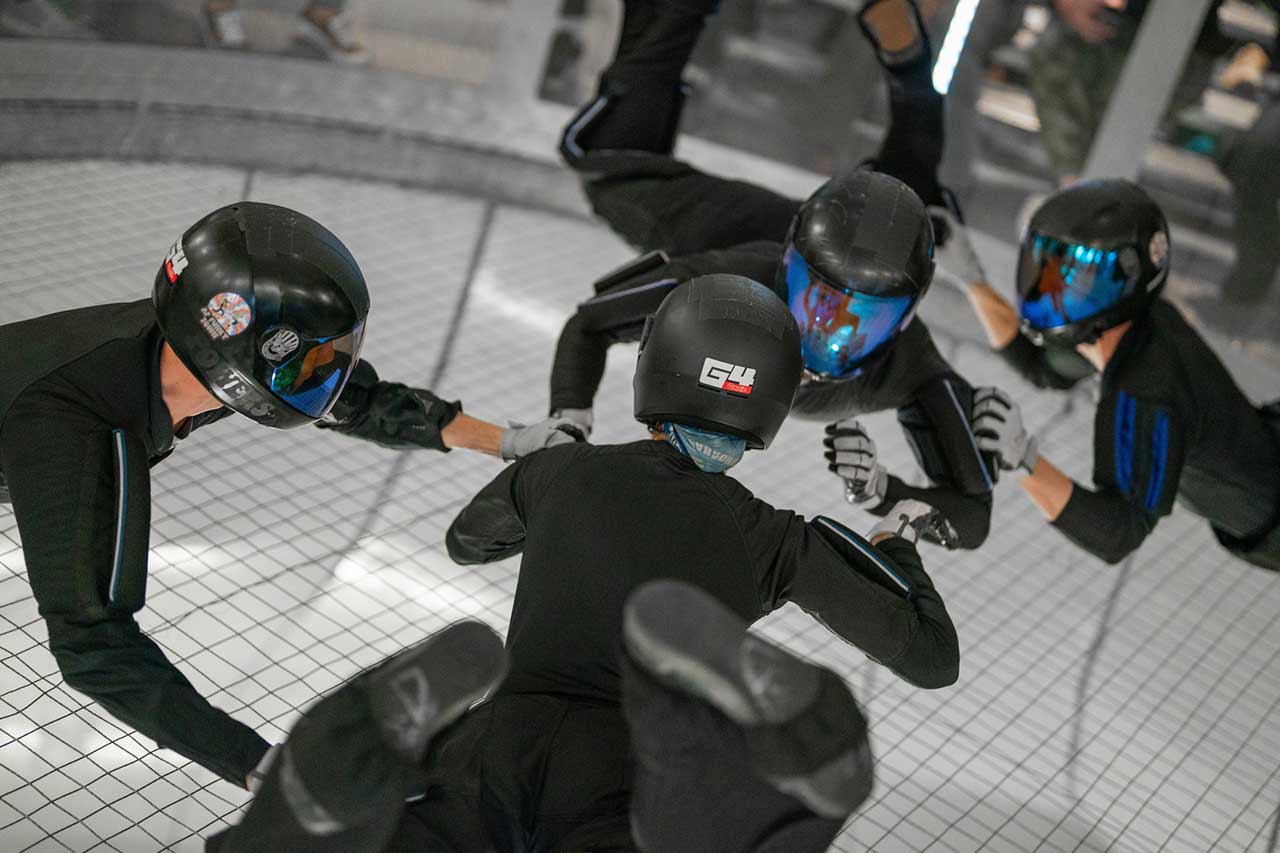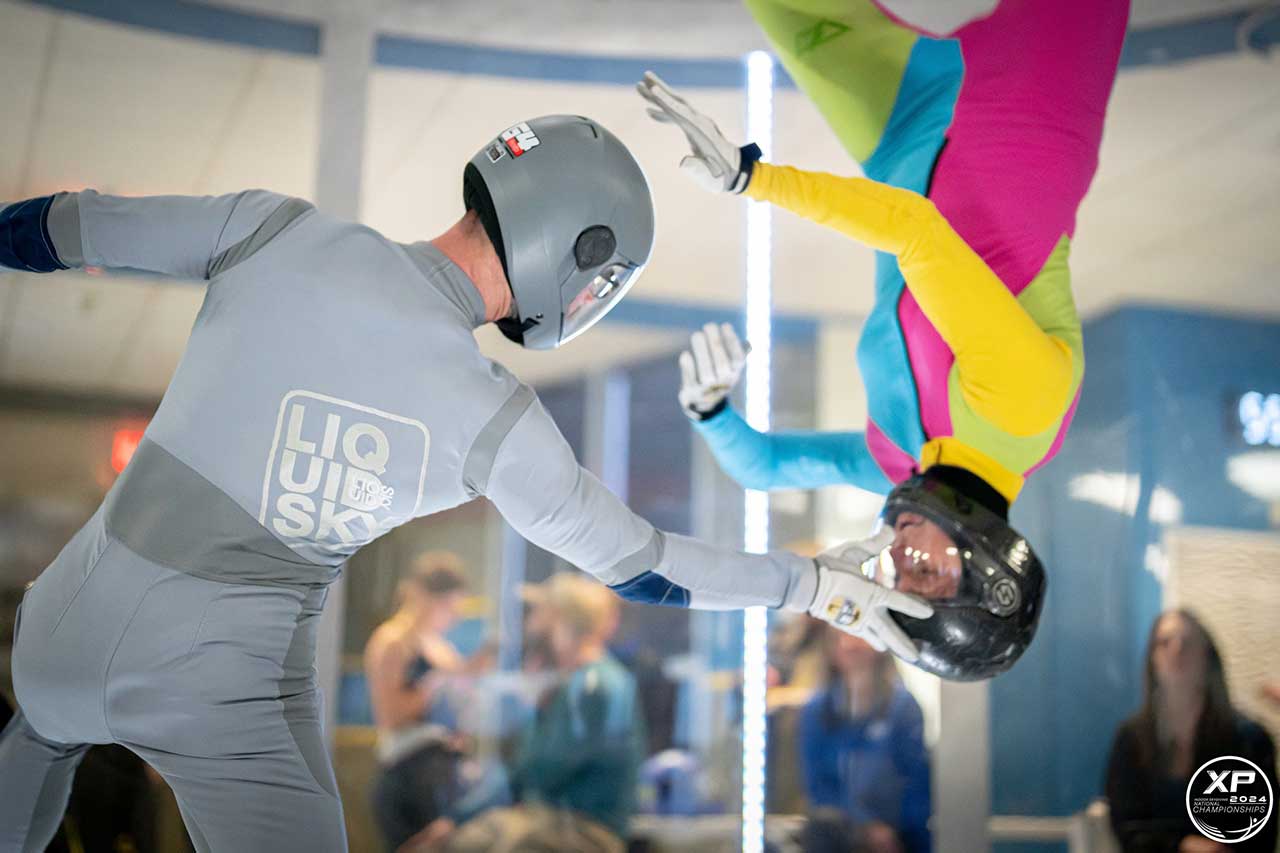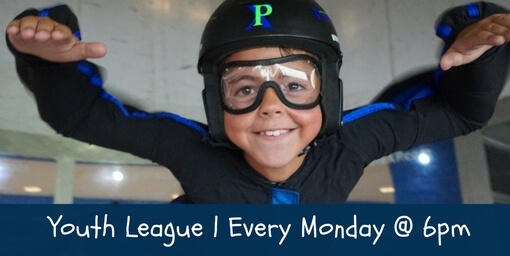
The World of Competitive Indoor Skydiving
Tuesday, May 21, 2024
Indoor skydiving opens doors to a realm of excitement and possibility. Whether you’re seeking an unforgettable birthday bash, honing your skills for the real deal, or simply indulging in a thrilling hobby, the world of indoor skydiving is a captivating sport in its own right.
For those looking to take things to the next level, an indoor skydiving competition may be right up your alley. Competitive indoor skydiving isn’t just on a local level either. In fact, the biggest skydiving competition happens at the World Cup of Indoor Skydiving. That’s right, the WORLD cup! The possibilities really are endless.

The Essence of Skydiving Competition
Skydiving competition serves as a stage for individuals and teams to showcase their skills and creativity. Competitors navigate a blend of precision teamwork and individual artistry across different types of skydiving disciplines.
In some disciplines, such as Formation Skydiving (FS), teams execute predetermined formations with seamless coordination and speed, earning points based on the accuracy and fluidity of their maneuvers. These formations are unveiled on the day of the event, injecting an element of spontaneity and excitement. Competitors learn the flow and objectives no less than one hour prior to flying their round, allowing time to “dirt dive” and practice with teammates outside of the tunnel before getting in the wind.
But not to worry, with access to all possible formations beforehand, competitors have ample opportunity to refine their techniques and get in plenty of practice before the competition. Competitors will fly a designated number of rounds, but a minimum of three are required to determine a winner.
Conversely, disciplines like Freestyle allow for boundless creativity, transforming the wind tunnel into a canvas for aerial expression. Here, technical finesse intertwines with artistic flair, as each routine unfolds as a unique symphony of movement and grace. Similar to its counterparts, certain moves will need to be flown for some of these disciplines, and the patterns will be drawn at random before the start of the competition. Judges will be on-site to watch and judge the competition live as well as review videos for accuracy.
Regardless of the discipline, the journey to victory demands dedication and skill. Competitors immerse themselves in rigorous training sessions, honing their abilities. Yet, beyond the thrill of competition lies a community bound by shared passion and camaraderie. As the event culminates in an awards ceremony, participants share not only their achievements but also the collective spirit that propels the sport forward.
Exploring Different Disciplines
Let’s take a deeper look at the skydiving types that take place in the wind tunnel, most of which take their influence from outdoor competitive skydiving.
Formation Skydiving (FS)
In formation skydiving, or FS, competitors fly in a belly-to-earth orientation, collaborating to build formations and accrue points. Each round comprises a series of formations to be completed within a given time frame, with the complexity varying based on the class.
Formations are broken down into blocks and randoms. Blocks are a set of formations executed in sequence with a predesignated movement in between and consist of two points. Randoms are a single formation and consist of one point. Teams of two to four members work together to execute each formation with precision and speed. Skipping a formation altogether results in deducted points, and not completing a random or block will result in zero points for that specific formation. The team with the most points at the end wins!
Vertical Formation Skydiving (VFS)
Vertical Formation Skydiving, or VFS, involves flying your body in a vertical head-up or head-down orientation. Similar to FS, this is also a team sport, and the main objective is to complete as many formations as quickly as possible. With VFS classes catering to diverse skill levels, participants progress from foundational belly and back flying to advanced vertical orientations, fostering a supportive environment for skill development and progression.

Freestyle Skydiving
Freestyle embraces artistic expression and transcends conventional boundaries, akin to dance in the air. Competitors craft choreographed routines synced to music, weaving together a tapestry of creativity and technicality. 0
Competitors are required to fly both a Free routine and a Compulsory routine. Compulsory routines are composed of a series of particular moves that must be performed, but the sequence and choreography of the routine are designed by the flyer. In Free routines, the competitor may make use of whatever moves and choreography they like. Judges evaluate performances based on the intricacy of the moves and the fluidity of transitions and competitors are awarded points between zero and 10 for each routine.
Dynamic Flying
Unlike its counterparts, Dynamic Flying was created specifically for indoor skydiving. Teams of two to four flyers fly together in a synchronized motion, with the goal of maintaining their place in line for the entirety of the sequence, traversing designated sequences with precision and grace while flying in 3D.
Dynamic competition consists of two rounds, a Speed round and a Free round. In the Speed round, the team will fly a specific sequence multiple times as quickly as possible. For the Dynamic Speed routines, the clock starts when the first flyer enters the flight chamber and stops when the last flyer exits. Competitors are penalized and time is added to their total time score for each mistake made.
Some competitions consist of only Speed rounds. Free rounds are more similar to Freestyle, in that these routines are completely individualized and are meant to display the skill and creativity of the flyers rather than the speed. Judging a Free round is completely subjective and based on the judge’s preferences.
Begin Your Journey
With disciplines catering to all tastes and skill levels, there’s never been a better time to take flight and join the ranks of competitive skydivers. If you haven’t tried indoor skydiving yet, there’s no time like the present! Call us with questions or book your flight today!
Tags: dynamic skydiving, formation skydiving, freestyle skydiving, Vertical Formation Skydiving
Copyright © 2024, Paraclete XP Indoor Skydiving, All Rights Reserved.
DropZone Web Design & Marketing by Beyond Marketing, LLC
